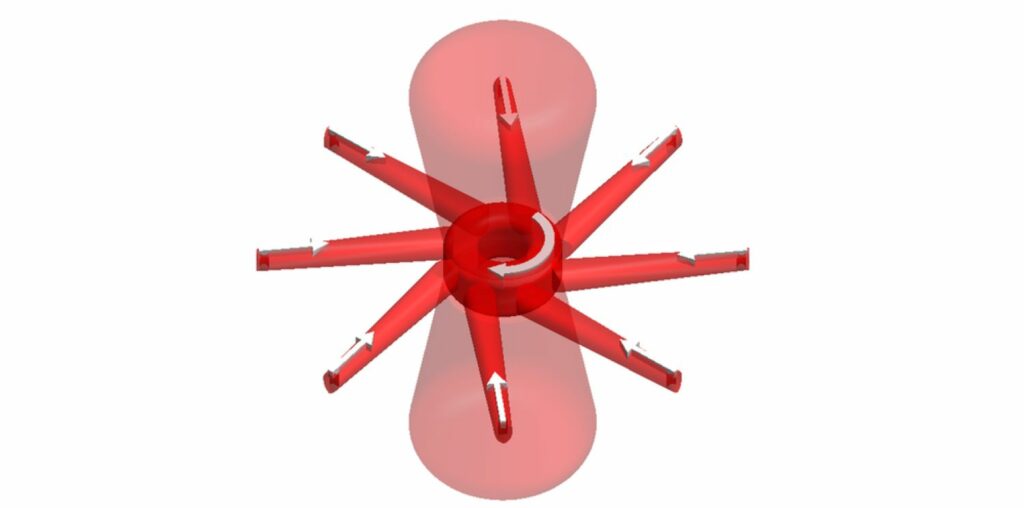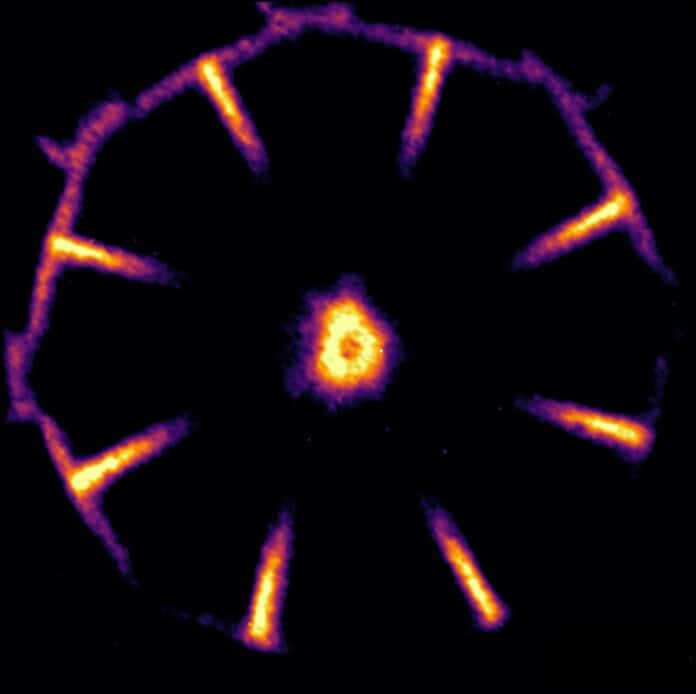There have been several questions about forming accretion disks from plasma and other matter falling into a black hole. Whenever matter falls into a black hole, it heats up and becomes plasma.
The plasma starts rotating in a structure called an accretion disc. The rotation causes a centrifugal force pushing the plasma outwards, balanced by the gravity of the black hole pulling it in.
A challenge arises from these glowing rings of plasma in orbit: how can a black hole expand if the matter is trapped in orbit rather than falling into the hole? According to the leading theory, magnetic field instability in the plasma results in friction, which makes it lose energy and sink toward the black hole.
Using liquid metals that can be spun and monitoring what occurs when magnetic fields are applied has been the primary means of testing this. The metals, however, are not an actual representation of free-flowing plasma because they must be contained within pipelines.

The Mega Ampere Generator for Plasma Implosion Experiments (MAGPIE) device has now been used by Imperial researchers to spin plasma in a way that is more accurate to accretion discs.
Using MAGPIE, scientists accelerated eight plasma jets and collided with them, forming a spinning column. They discovered that the closer to the inside of the spinning ring was moving faster, an essential characteristic of accretion discs in the Universe.
The first author Dr. Vicente Valenzuela-Villaseca completed the study during his Ph.D. in the Department of Physics at Imperial, funded by a President’s Scholarship. He said: “Understanding how accretion discs behave will not only help us reveal how black holes grow, but also how gas clouds collapse to form stars, and even how we might be able to better create our stars by understanding the stability of plasmas in fusion experiments.”
MAGPIE only allows for a single disc spin because it generates brief plasma pulses. This proof-of-concept experiment demonstrates, however, how more rotations could be achieved with longer pulses, enabling a more accurate characterization of the disc’s properties. A longer experiment run time would also enable the application of magnetic fields to examine their impact on the system’s friction.
Dr. Valenzuela-Villaseca said: “We are just at the start of being able to look at these accretion discs in whole new ways, which include our experiments and snapshots of black holes with the Event Horizon Telescope. These will allow us to test our theories and see if they match astronomical observations.”
Journal References:
- V. Valenzuela-Villaseca, L. G. Suttle, F. Suzuki-Vidal et al. Characterization of Quasi-Keplerian, Differentially Rotating, Free-Boundary Laboratory Plasmas. Physical Review Letters. DOI: 10.1103/PhysRevLett.130.195101
